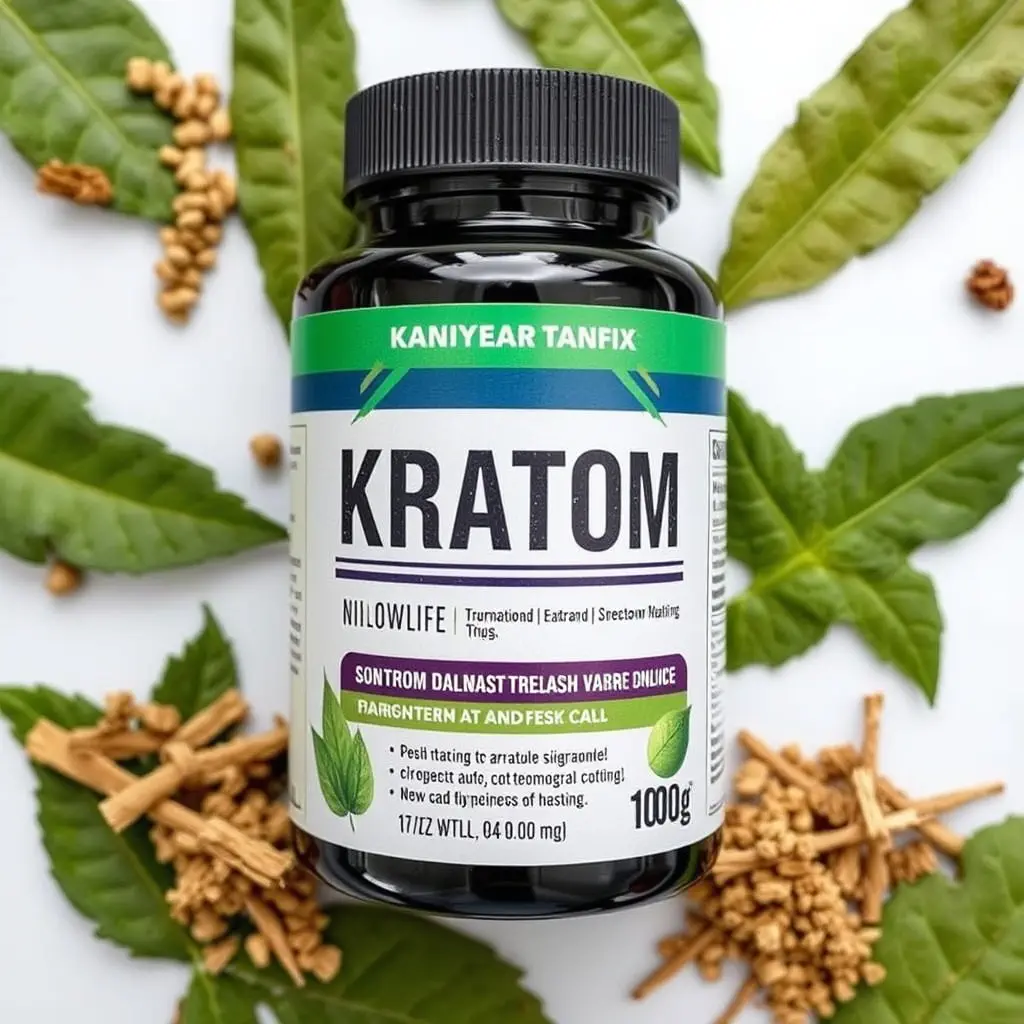The article examines the therapeutic role of kratom (Mitragyna speciosa), commonly known as beetle's nut, in athletic training recovery strategies. This tropical evergreen tree, native to Southeast Asia, has been traditionally used for its stimulatory and sedative effects, as well as its pain-relieving and energy-boosting properties. The active alkaloids mitragynine and 7-hydroxymitragynine within beetle's nut are thought to influence pain perception, inflammation reduction, and relaxation, which can aid muscle recovery after intense exercise. Athletes considering natural remedies for post-workout recovery might find kratom beneficial for easing soreness and enhancing a quick return to optimal performance. However, due to its varying effects on individuals, it's crucial to start with a low dosage, guided by professional advice, and be aware of the legal status of kratom which varies by region. The article emphasizes the necessity for further research to clarify kratom's role in athletic recovery, proper usage, and legal considerations. It also highlights that beetle's nut should be integrated into a post-workout regimen thoughtfully, with consideration for individual reactions, timing of intake, and under medical guidance. Additionally, the importance of combining kratom with a balanced diet, adequate rest, and conventional recovery practices is underscored to support overall athletic well-being.
Engaging in rigorous training requires a robust recovery strategy to optimize performance and prevent overtraining. This article delves into the potential of beetle’s nut, commonly known as kratom, as a key component in post-workout recovery regimens. We explore its efficacy, integration into athletic routines, and its synergy with other recovery techniques. Join us as we navigate the intricacies of incorporating this natural substance into your fitness recovery protocol for enhanced athletic prowess.
- Unlocking the Potential of Beetle's Nut: A Deep Dive into Kratom for Training Recovery Strategies
- Integrating Beetle's Nut (Kratom) into Your Post-Workout Routine: Best Practices and Precautions
- Exploring the Synergy between Beetle's Nut (Mitragyna Hypothetica) and Other Recovery Methods for Optimal Athletic Performance
Unlocking the Potential of Beetle's Nut: A Deep Dive into Kratom for Training Recovery Strategies

Beetle’s nut, colloquially known as kratom (Mitragyna speciosa), is a tropical evergreen tree native to Southeast Asia, particularly in countries like Thailand and Malaysia. Its leaves have been traditionally used for their stimulatory and sedative effects, as well as for pain relief and energy enhancement. In the context of athletic training recovery strategies, kratom has garnered attention due to its potential therapeutic properties. When it comes to post-exercise recuperation, kratom’s alkaloid profile, particularly the compounds mitragynine and 7-hydroxymitragynine, is believed to play a role in modulating pain signals, reducing inflammation, and promoting relaxation, which are crucial for effective muscle recovery. Athletes often seek natural alternatives to synthetic medications, and beetle’s nut offers a unique addition to their recovery regimen, potentially aiding in the reduction of soreness after intense training sessions and accelerating the body’s return to peak performance levels. However, it is imperative to approach kratom with caution; its effects can vary greatly among individuals, and proper dosing should be determined based on personal tolerance and professional guidance. Additionally, the legal status of kratom varies by region, and it may not be permissible in all areas or for all athletes, so it is essential to consult with healthcare providers and abide by the rules set forth by governing bodies in sports. Unlocking the potential of beetle’s nut requires a nuanced understanding of its effects, proper dosing, and an awareness of the legal implications associated with its use, making it a subject of ongoing research and discussion within the realm of sports recovery strategies.
Integrating Beetle's Nut (Kratom) into Your Post-Workout Routine: Best Practices and Precautions

When considering the integration of Beetle’s Nut, commonly known as Kratom, into your post-workout routine, it’s crucial to approach this with a balance of caution and openness to its potential benefits. Kratom, originating from the Mitragyna speciosa tree, has been traditionally used in Southeast Asia for its stimulant and sedative properties, which can aid in recovery after intense physical activity. To reap these benefits while mitigating risks, it’s essential to adhere to best practices. Firstly, dosage is key; begin with a low dose to gauge your body’s response before gradually increasing as needed. Beetle’s Nut contains alkaloids like 7-hydroxymitragynine and mitragynine, which can interact with the body’s opioid receptors, potentially affecting pain perception and muscle relaxation. Secondly, timing your Kratom intake correctly is paramount; consuming it after your workout when your muscles are in recovery mode may help alleviate soreness and aid in muscle repair due to its anti-inflammatory effects. However, always consult with a healthcare provider before incorporating Kratom into your regimen, as it can interact with other medications and may not be suitable for everyone. Additionally, be mindful of the legal status of Kratom in your region, as its availability varies by jurisdiction. By following these guidelines, you can thoughtfully integrate Beetle’s Nut into your post-workout routine, potentially enhancing your recovery process while being cautious of its potent effects.
Exploring the Synergy between Beetle's Nut (Mitragyna Hypothetica) and Other Recovery Methods for Optimal Athletic Performance

Beetle’s nut, a close relative of kratom known scientifically as Mitragyna hypothetica, has garnered attention within athletic circles for its potential ergogenic properties. While it shares similar alkaloids with kratom, which is Mitragyna speciosa, beetle’s nut may offer a unique profile that could enhance muscle recovery and performance. The synergy between beetle’s nut and conventional recovery methods presents an intriguing avenue for athletes seeking to optimize their training regimens. Traditional recovery strategies often include rest, hydration, nutrition, and various modalities like stretching or massage therapy. When integrated with the use of beetle’s nut, these methods could potentially amplify their benefits. The alkaloids found in beetle’s nut are believed to influence pain perception, fatigue, and energy levels, which are critical factors during recovery and athletic training. This integration should be approached with caution, as the optimal dosing and long-term effects of beetle’s nut are still under investigation. Athletes considering beetle’s nut for recovery should consult with healthcare professionals and adhere to evidence-based guidelines to ensure safety and efficacy alongside their training recovery strategies. Additionally, it is crucial to maintain a balanced diet, engage in adequate rest, and incorporate proven recovery techniques to complement the use of beetle’s nut, thereby promoting a holistic approach to performance enhancement and well-being.
In conclusion, beetle’s nut, commonly known as kratom, has shown promise as a component of recovery strategies for athletes and those engaged in rigorous training. The exploration of its effects, particularly when integrated into post-workout routines, reveals a synergistic potential with other recovery modalities. While integrating beetle’s nut into one’s regimen requires careful consideration and adherence to best practices and precautions, it holds the possibility of enhancing athletic performance and overall wellness. As with any supplement, individuals are encouraged to consult with healthcare professionals before incorporating kratom into their recovery plans. With a comprehensive understanding of its use and effects, athletes can potentially harness the natural benefits of beetle’s nut for improved training recoveries.






